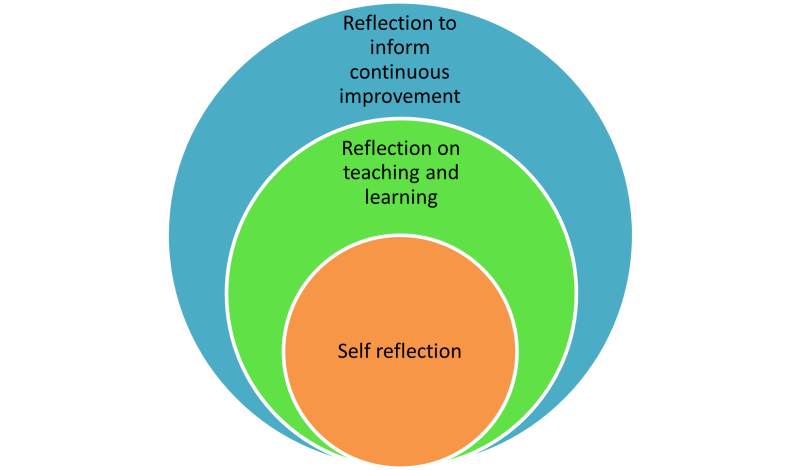Uncovering the layers of reflective practice
- Home
- Latest news
- We hear you
- Uncovering the layers of reflective practice
During June/July, We hear you will be featuring a three-part series exploring reflective practice.
The series will address some of the challenges educators face around reflective practice and critical reflection. We explore what it is and how it informs your work, practical strategies and what to record while sharing some quality practice examples.

Uncovering the layers of reflective practice: Introduction
Current data identifies Quality Area 1: Educational program and practice as one of the most challenging quality areas for services to gain a rating of Meeting or Exceeding National Quality Standard (NQS). In particular, Element 1.2.3: Critical reflection on children’s learning and development has been at the top of the ‘not met’ list for some time. When critical reflection is embedded naturally in the practice at a service, educators engage in critical reflection as part of their daily routines.
In this series, the diagram representing the multiple layers of reflective practice will help us think through and visualise the way it connects and impacts all aspects of our work, from self-reflection to reflecting on teaching and learning and, finally, reflection that informs continuous improvement. The approved learning frameworks refer to reflective practice as a ‘form of on-going learning that involves engaging with questions of philosophy, ethics and practice. Its intention is to gather information and gain insights that support, inform and enrich decision making about children’s learning’(Belonging, Being & Becoming: The Early Years Framework for Australia (EYLF), p. 14; My Time, Our Place: Framework for School Age Care in Australia, p. 12).
Throughout the series we use a range of terms interchangeably such as reflective practice and critical reflection. There is a common misconception that critical reflection is about finding fault or criticising an event or the actions of those involved. The reality is critical reflection involves reflecting on experiences, posing questions, sharing ideas and respectfully considering different perspectives. It allows us to develop deeper understandings, explore concerns, improve the program and raise the overall quality of education and care experiences of children. It also supports educators to develop confidence in professional judgement.
All aspects of your work are supported by critical reflection, including engaging with the NQS. The NQS is intentionally not prescriptive to empower educators to draw on their pedagogy and knowledge of child development and the learning frameworks, and to make decisions based on their unique knowledge of the children, families and communities in which the service operates. Remember, there’s no one set way or approach. Your process of critical reflection is unique to you and your service context.
Wherever you are at with your reflective practice journey, we challenge you to go deeper and consider how critical reflection fits in with the professional learning community within your service context.
What you need to begin or strengthen your reflective practice:
- A safe respectful, ethical space where everyone's ideas are valued and heard
- A willingness to continue learning, growing and changing
- A commitment to improving outcomes for children
- A refresh of the approved learning frameworks to support the process and the research
- TIME! Set aside some time to meet, think, read and reflect.
Remember the end goal is to improve outcomes for children, families and communities!
Next week, we will begin the series with part one and explore the way self-reflection is the key to growth, continuous improvement and quality outcomes.
Further reading and resources
- ACECQA – Information sheet – Developing a culture of learning through reflective practice
- Anne Kennedy – The Spoke: Early Childhood Australia – Reflective Practice: Making a commitment to ongoing learning
- Early Childhood Australia – Reflection as a tool for quality: Working in the National Quality Standard
Leave a comment